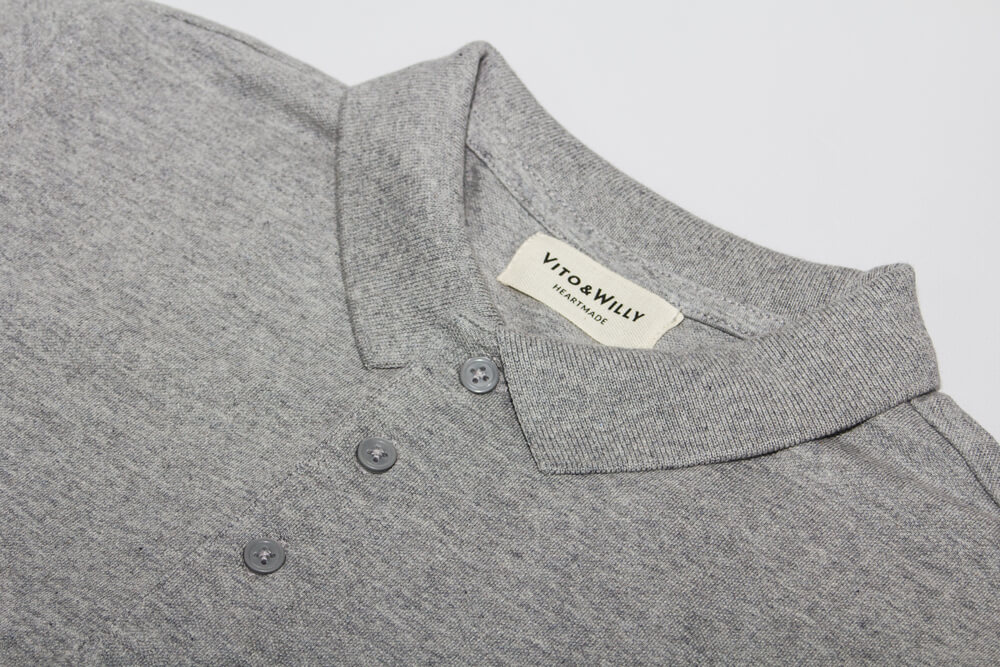To wash polo shirts, separate them by color and fabric type, then machine wash on a gentle cycle with cold water and a mild detergent. Avoid using bleach or harsh chemicals, and either hang them to dry or tumble dry on a low heat setting.
Properly caring for your polo shirts will help preserve their quality and lifespan.

Credit: www.clean-group.com.au
Table of Contents
Choosing The Right Polo Shirt
When it comes to washing polo shirts, selecting the right one is crucial. Whether for casual or formal occasions, a high-quality polo shirt can improve your style and comfort. Here are factors to consider when choosing the perfect polo shirt.
Material Matters
The fabric of a polo shirt plays a significant role in its overall quality and maintenance. Look for breathable and durable materials such as cotton, polyester, or a blend of both. These fabrics are easy to wash and less prone to wrinkles, ensuring a longer lifespan for your polo shirt.
Proper Fit
A well-fitted polo shirt enhances your appearance and comfort. Ensure that the shirt isn’t too tight or too loose, as it may affect the washing process and longevity of the fabric. Check the shoulder seams, sleeve length, and body length to ensure a proper fit that allows for movement and breathability. A well-fitted polo shirt also maintains its shape after multiple washes, contributing to its longevity.
Understanding Polo Shirt Care Labels
Learn how to properly care for your favorite polo shirts with these helpful tips. From reading care labels to choosing the right washing method, this guide will ensure your polos stay clean and fresh without any damage.
Deciphering Laundry Symbols
When it comes to washing polo shirts, understanding the care labels is essential. Deciphering laundry symbols can help you determine the right washing method for your favorite polo shirts. These symbols are small pictures that provide information about washing, drying, ironing, and dry cleaning instructions. They are designed to be universal and are found on the care labels of most clothing items.
Here are some commonly used laundry symbols and their meanings:
| Symbol | Meaning |
|---|---|
 |
Machine wash |
 |
Hand wash |
 |
Do not bleach |
 |
Tumble dry |
 |
Iron at low temperature |
 |
Dry clean only |
Special Instructions
In addition to the laundry symbols, some care labels also include special instructions for washing polo shirts. These instructions provide further guidance on how to properly care for your polo shirts. Here are some examples:
- Wash inside out: This instruction advises you to turn the polo shirt inside out before washing. Doing so can help protect the outer fabric and prevent color fading.
- Use mild detergent: Using a mild detergent is important to preserve the colors and fabric of your polo shirts. Harsh detergents can cause damage and fading.
- Avoid hot water: Hot water can shrink polo shirts and damage their fibers. It’s best to stick to lukewarm or cold water when washing.
- Air dry: Instead of using a dryer, it is recommended to air dry polo shirts to prevent shrinkage and maintain their shape. Hang them in a well-ventilated area or lay them flat on a clean surface.
By following these special instructions, you can ensure that your polo shirts remain in great condition for a long time. Proper care will help preserve their color, shape, and overall quality.
Pre-treating Stains
Before diving into a full wash, it’s essential to pre-treat stains on your polo shirts.
Identifying Common Stains:
List of common stains:
- Coffee
- Wine
- Grease
- Ink
Effective Stain Removal Methods:
Follow these effective methods for stain removal:
- Use a stain remover for tough stains
- Blot excess liquid before treating
- Rinse with cold water for best results
Optimizing The Washing Process
When it comes to caring for your polo shirts, optimizing the washing process is crucial to maintain their quality and longevity.
Selecting The Right Detergent
1. Choose a detergent specifically designed for colors to avoid fading.
2. Read the label to ensure it’s suitable for the fabric of the polo shirt.
Setting The Correct Temperature
1. Select a cool temperature setting to prevent shrinkage or damage.
2. Follow the care instructions on the clothing tag for best results.
Machine Washing Polo Shirts
Polo shirts are versatile wardrobe staples that require proper care to maintain their quality. When it comes to cleaning them, using a washing machine can be convenient and effective. It’s essential to follow the right steps to ensure your polo shirts stay in top condition wash after wash.
Sorting Clothes Properly
- Separate whites from colors to prevent color bleeding.
- Check for delicate items that may require special care.
- Turn polo shirts inside out to protect the fabric during the wash.
Loading The Washer
- Place polo shirts in the machine loosely to allow for proper circulation.
- Avoid overloading the washer to ensure thorough cleaning.
- Use a gentle detergent suitable for colored fabrics.

Credit: www.fastklean.co.uk
Hand Washing Polo Shirts
Welcome to the ultimate guide on washing polo shirts! Hand washing is a gentle and effective method to keep your polo shirts in top-notch condition. Whether it’s to preserve the fabric’s integrity or to remove specific stains, following a few simple steps can ensure your polo shirts maintain their quality wash after wash.
Preparing The Soapy Solution
Before immersing your polo shirt in water, start by preparing a soapy solution. Use a mild detergent and fill a basin with lukewarm water. Avoid using hot water, as it can cause the colors to fade or the fabric to shrink. A tablespoon of gentle detergent should suffice. Stir the water gently to create a foamy solution.
Gently Washing The Shirt
Once the soapy solution is ready, gently wash the shirt by submerging it. Avoid rubbing or scrubbing the fabric vigorously, as this can cause damage. Instead, use your hands to gently squeeze the soapy water through the fabric, paying close attention to areas with stains or discoloration. Be sure to give equal consideration to all parts of the shirt to ensure a thorough cleansing.
Drying And Ironing Techniques
To ensure your polo shirts maintain their shape and look pristine, proper drying and ironing techniques are essential. Here’s a guide to help you achieve wrinkle-free, freshly ironed polo shirts at home.
Choosing The Right Drying Method
After washing your polo shirts, it’s crucial to select the appropriate drying method. Air-drying is gentle and effective, helping to prevent shrinkage and maintain the fabric’s integrity. Avoid using high-heat dryers, as they may cause the shirt to lose its shape and color. If you opt for machine drying, use a low-heat setting to protect the fabric.
Ensuring Wrinkle-free Results
To achieve a wrinkle-free finish, it’s important to iron your polo shirts correctly. Start by smoothly laying the shirt on the ironing board, and use a low to medium heat setting on the iron. Prioritize the collar and cuffs, as they tend to wrinkle the most. Use gentle pressure and move the iron steadily to avoid creases. Hang the polo shirts immediately after ironing to maintain their crispness.

Credit: fashioncleaners.com
Storing Polo Shirts Properly
Properly washing and storing polo shirts is essential for maintaining their quality. When washing polo shirts, it’s best to use a gentle cycle and avoid mixing them with rough fabrics. After washing, lay the shirts flat to dry to prevent stretching and maintain their shape.
When storing them, opt for folding instead of hanging to avoid potential stretching or misshaping.
Folding Vs. Hanging
When it comes to storing your polo shirts, you have two main options: folding or hanging. Both methods have their pros and cons, so it’s essential to consider your specific needs and preferences.
If you have limited space in your wardrobe, folding your polo shirts might be the most practical solution. To fold your shirts neatly, follow these simple steps:
1. Lay your polo shirt flat on a clean surface, with the buttons facing up.
2. Fold the sleeves in towards the center of the shirt, creating a straight line.
3. Fold the shirt in half from top to bottom, aligning the edges carefully.
4. Fold the shirt in half again, bringing the bottom hem up to meet the collar.
Folding your polo shirts can save space and help prevent wrinkles. However, if you have ample closet space and want to ensure your shirts maintain their shape, hanging them is the way to go. Here’s how to hang your polo shirts properly:
1. Choose hangers specifically designed for shirts, with wide shoulders to support the collar and shoulders of the polo.
2. Button up the top button on your polo shirt.
3. Insert the hanger through the neck of the shirt, making sure the collar sits nicely on the hanger.
4. Smooth out any wrinkles and adjust the shirt’s position on the hanger.
By hanging your polo shirts, you can keep them wrinkle-free and maintain their shape. Just remember to leave enough space between each shirt to prevent overcrowding.
Avoiding Moth Damage
Moths can wreak havoc on your polo shirts if you’re not careful. These pesky insects are particularly attracted to natural fibers like cotton, making polo shirts a potential target for their destructive habits. To protect your favorite shirts from moth damage, consider these preventive measures:
1. Wash your polo shirts before storing them for an extended period as moths are drawn to body oils and stains.
2. Ensure your polo shirts are completely dry before putting them away, as moisture attracts moths.
3. Store your shirts in airtight containers or garment bags to create a barrier against moths.
4. Use cedar wood products, such as cedar balls or blocks, in your closet to repel moths naturally.
Remember to inspect your polo shirts regularly for any signs of moth damage, such as small holes or fraying. If you do find any damage, isolate the affected shirts and wash or dry clean them before storing them again.
In conclusion, proper storage of your polo shirts is crucial for maintaining their quality and longevity. Whether you choose to fold or hang them, ensure you protect them from moth damage to preserve their appearance. By following these tips, you can enjoy your polo shirts for years to come.
Frequently Asked Questions Of How To Wash Polo Shirts
Can You Put Polo Shirts In The Washer?
Yes, you can put polo shirts in the washer. It’s best to use a gentle cycle and cold water to prevent shrinking. Avoid mixing colors to prevent bleeding. Always check the care label for specific instructions. It’s important to air dry or use a low heat setting in the dryer.
Should You Put Polos In The Dryer?
Yes, it is safe to put polos in the dryer. Just follow the care label instructions to prevent shrinking and fading.
How Do You Wash Polo Shirts So They Don’t Shrink?
Wash polo shirts in cold water and use a gentle detergent. Avoid high heat when drying and opt for air-drying instead. Follow the care label instructions for best results.
Wash a polo unbuttoned to prevent stretching or misshaping during the laundering process. This helps maintain the polo’s original fit and shape.
Read Next:
Conclusion
To summarize, washing polo shirts requires proper care and attention to maintain their quality and lifespan. By following the steps mentioned in this guide, you can keep your polo shirts clean, bright, and fresh for a long time. Remember to separate colors, use gentle detergent, avoid bleach, and air-dry them.
Regular maintenance and washing will ensure that your polo shirts stay in top condition and continue to look stylish whenever you wear them.
